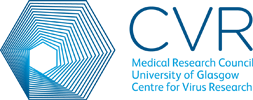Orthologous Clusters of Interferon-Stimulated Genes
|
|
|
| * Search using an HGNC approved gene symbol. Use the HGNC symbol checker to look up approved gene symbols. |
Selected clusters must meet all of the following species criteria:
|
Ortholog:
|
Up-regulated gene:
|
Down-regulated gene:
|
|
| {{species[speciesCriterion.species].displayName}} |
Ortholog:
|
Up-regulated gene:
|
Down-regulated gene:
|
Selected clusters must meet all of the following criteria:
| Orthologs must be present in | at least species and at most species |
| Up-regulated genes must be present in | at least species and at most species |
| Down-regulated genes must be present in | at least species and at most species |
|
Orthologous clusters
This database groups genes together in orthologous clusters, based on ENSEMBL annotations. Clusters may contain genes from different species i.e. orthologs. In some cases a gene has expanded within the species of a genome producing paralogs, so a cluster may also contain multiple genes from the same species.
For some clusters there was no ENSEMBL-annotated ortholog in the genome of a given species. Some of these absent orthologs have been resolved through a BLAST approach, and others via in silico 'baiting' for reads matching the ortholog of a closely related species. These genes are prefixed with 'CVR-defined gene'.
Within an orthologous cluster, the effect of interferon varies: some genes are up-regulated, others down-regulated, still others are not differentially expressed.
Searching
This web tool allows users to search for orthlogous clusters based on various kinds of search criteria.Search clusters by gene symbol or ENSEMBL ID
Simply type in a gene symbol or ENSEMBL ID; the web tool will suggest matches from the database and return the cluster containing the specified gene. Approved gene symobls provided by the HUGO Gene Nomenclature Committee (HGNC) are accepted. For example, to search for RIG-I you will need to use DDX58. If you are unsure of the approved gene symbol, the HGNC symbol checker can be used to check.Search clusters by presence / expression in specific species
Select clusters based on the presence and expression characteristics of genes in particular species. For example: "All clusters which contain orthologs in all the mammal species, including an up-regulated gene in humans and a down-regulated gene in cattle and sheep".Search clusters by presence / expression in a number of species
Select clusters based on the presence and expression characteristics of genes in a certain number of species. For example: "All clusters which contain an ortholog in at least 5 species, including at least 3 species where there is an up-regulated gene".Results
All clusters matching the criteria provided will be output. Clusters will specify all the genes within the cluster, grouped by species. Some species may not posess an ortholog within the cluster; these species will be absent.
If a gene's differential expression value is significant, it will have a red (significantly upregulated) or blue (significantly downregulated) arrow in the 'Expression' column, otherwise this column is blank.
Tables of search results can be downloaded in either tab-delimited or CSV format using the 'Download' button.
Differential expression parameters
This controls how genes are classified as up-regulated or down-regulated. Default values are set as any significant level of up-regulation (> 0) or down-regulation (< 0). The default value for significance is set at a false discovery rate (FDR) of 0.05. All these parameters may be edited; changing these values can affect which clusters are selected and how the 'Expression' result column is populated.Results
Clusters {{firstClusterIndex}} to {{lastClusterIndex}} of {{orthoClusters.length}}
| Orthologous cluster ID | Species | ENSEMBL ID | Gene | Expression | log2 Fold Change | FDR | |||
|---|---|---|---|---|---|---|---|---|---|
| {{resultRow.orthoClusterId}} | {{resultRow.species}} | {{resultRow.ensemblId}} | CVR-defined gene: {{resultRow.ensemblId}} | {{resultRow.geneName}} | {{resultRow.log2fc}} | {{resultRow.fdr}} |
Publication

Fundamental Properties of the Mammalian Innate Immune System Revealed by Multi-Species Comparison of Type I Interferon Responses
Andrew E. Shaw, Joseph Hughes, Quan Gu, Abdelkader Behdenna, Joshua B. Singer, Tristan Dennis, Richard J. Orton, Mariana Varela, Robert J. Gifford, Sam J. Wilson and Massimo Palmarini
Published December 18, 2017 : https://doi.org/10.1371/journal.pbio.2004086
